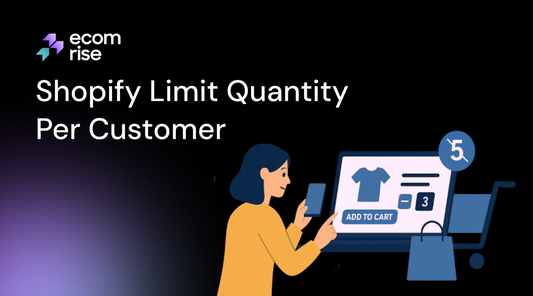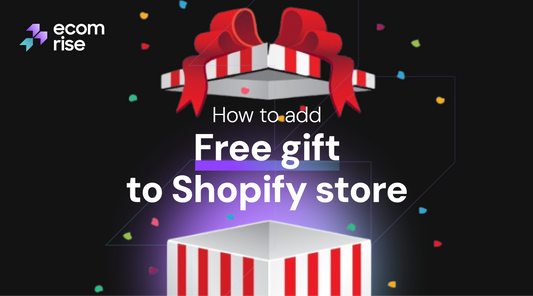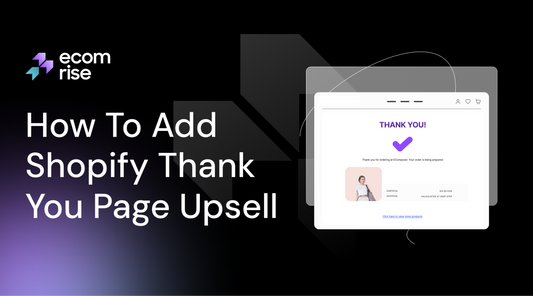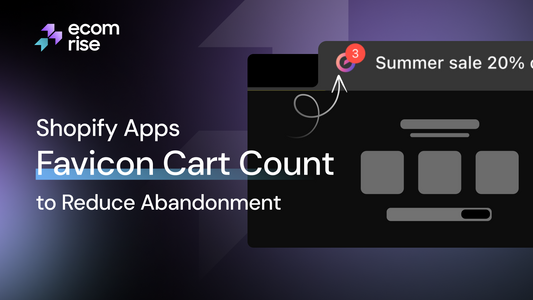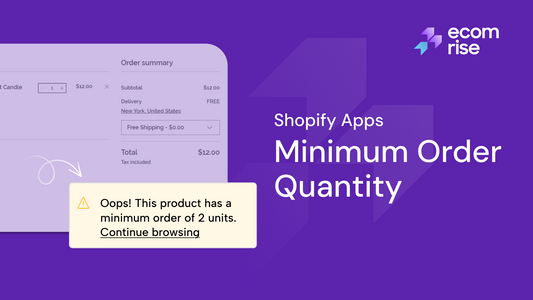9+ Ways For Getting More Shopify Sales (Non-Paid Advertising)
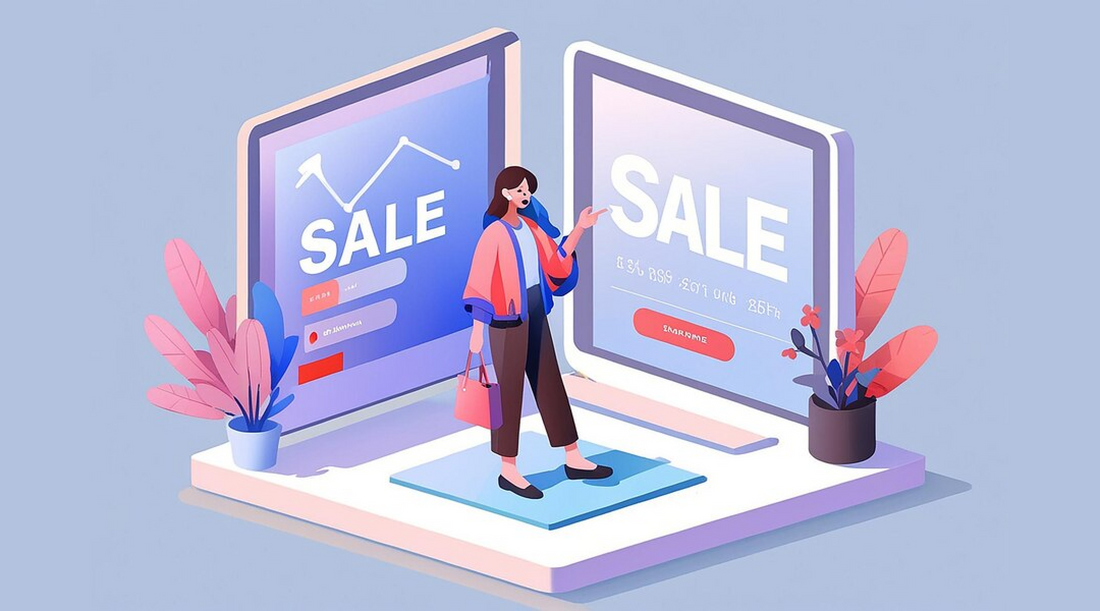
Want to get more sales on Shopify? Running a Shopify business is thrilling, but stagnant sales may be discouraging. You've worked hard on your goods, but gaining consumers might be difficult with limited marketing resources. But don't worry—you can unleash a world of potent non-paid marketing methods.
This blog article shares 9+ ways to boost Shopify sales without paid advertising.
Why Isn't Your Shopify Store Generating Sales?

You've got the items, a fantastic website design, and even the ideal product descriptions. But where are the sales hiding? Let's focus on three main causes:
Lack of Traffic
Even the most beautiful shop will fail to generate revenue if no one knows it exists. Any online shop depends on traffic to be successful. Without it, your shop is essentially trapped on a barren island.
So, why isn't your Shopify shop attracting customers? There might be a variety of reasons:
First, visibility is restricted. Many clients will only find your shop if it's high on Google or other search engines. Your shop may be buried in search engine results, never to be seen
Finally, there is social media silence. Kepios reports that 5 billion (62.3%) of the world's population use social media. So, without connecting with your target audience on Instagram, Facebook, or TikTok, your shop is losing out on golden traffic opportunities.
Website Issues
Let's explore website issues—those annoying gremlins hiding in your Shopify shop hurt sales. Beware of these typical culprits:
- Unresponsive Design: Mobile devices account for 58.3% of all internet traffic; if your Shopify shop is not mobile-friendly, you risk alienating your prospective consumer base.
- Cluttered Layout: Users decide whether they like your website in 50 milliseconds (0.05 seconds). That is why customers will leave quickly if your Shopify business has a crowded layout, unclear navigation, or too many distractions.
- Technical Glitches: Broken links, missing photos, and checkout issues may all derail the buying experience and drive consumers away. Regularly examine your Shopify shop for technical issues and resolve them immediately.
- Security Concerns: If your Shopify shop is unsafe, consumers may hesitate to provide payment information, resulting in abandoned carts and purchases. To secure your customers' sensitive information, ensure that your shop has SSL encryption and other security measures in place.
- Slow site speed. Nowadays, nobody has time to wait for a webpage to load. A slow-loading Shopify site will lose customers quicker than you can say “page speed optimization.
So, if your Shopify shop fails to produce sales, it may be time to roll up your sleeves and address the website problems.
The Market Or Pricing Concerns
Picture this: You are attempting to sell ice to Eskimos. That's hardly strictly a winning plan, is it? You will struggle uphill if your items do not connect with your target audience or answer a real need. So, analyze your target market's desires, requirements, and pain areas and customize your product offers appropriately.
Also, you should analyze the price point predicament. Although undercutting the competition may seem sound, selling your items too cheap might loss trust and perceived value. On the other hand, selling them too costly may drive budget-conscious customers away. So, find the sweet spot where your rates reflect the value you deliver while being affordable.
Finally, 47% of buyers in the United States abandoned online purchases during checkout due to extra charges such as shipping, taxes, or fees. So, communicate all charges upfront to develop confidence and minimize surprises.
9 Ways To Get More Sales On Shopify
This section covers 9 effective, non-paid Shopify sales boosters. These techniques may naturally attract new consumers, build loyalty, and boost revenue:
1. Increase Organic Traffic With SEO
44% of customers start online product research using a search engine and seek top results. Search engine optimization (SEO) may make your ambition of attracting clients a reality. While it takes some initial work to make your Shopify shop SEO-friendly, the long-term rewards are worth it.
The good news? Shopify has several SEO-friendly features. You may quickly change your pages' metadata (titles, descriptions, and URL slugs). Discover Shopify SEO for Beginners: Knowledge & Guide, which is ideal for newbies.
Additionally, Shopify produces sitemaps, 301 redirects, and canonical URLs. This guarantees that all your critical pages, from the homepage to product listings and collections, are indexed and easily discovered by search engines.
While Shopify offers a strong foundation, powerful Shopify SEO apps like Ahrefs, Yoast SEO for Shopify, etc. can take your SEO even further. These tools identify potential issues and suggest improvements, optimizing your store for search.
You can also use content marketing, optimize your website, and boost page loading speed to make your Shopify shop SEO-friendly and high in search engine rankings.
1.1 Take Advantage Of Content Marketing
Blog entries rank highly on Google, letting you directly address these questions prospective consumers are looking for. This strategy increases search engine exposure and establishes you as an industry expert.
Beardbrand is a good example. This men's grooming subscription box company targets a niche demographic online. Their blog includes men's grooming, hairstyling, product, and lifestyle tips. This industry's thought leader content strategy drives organic traffic and brand loyalty for Beardbrand.

Ready to start your blog? Shopify provides materials to assist you in successfully creating, setting up, and managing your blog.
1.2 Optimize Your Product Pages With Text, Photos, And Video
Since your products are the lifeblood of your Shopify store, highlighting their advantages is essential. However, the in-store experience of physically evaluating products is necessary in today's online climate.
What's the solution? Create an engaging product page experience that bridges the gap.
The first uses high-quality photos and multi-angle shots highlighting the product's features.
Videos also captivate. 96% of internet shoppers found videos helpful. You can create engaging demonstrations of functionality and capabilities with video editing tools.
Finally, include a clear and compelling product description to accompany the images you create:
- Clear specifications: Include critical product information such as size, materials, and care recommendations.
- Storytelling power: Tell a fascinating product story. What issue does it fix? Will it enhance life? Business relies on good storytelling.
Read more: How to Add a Short Shopify Product Page Description?
For instance, sustainable footwear maker Allbirds has gorgeous, informative product web pages. Their website has high-quality photos of the sneakers from several angles and lifestyle photographs. Each shoe's components, functionality, and maintenance instructions are also explained clearly.

A product page with great pictures and extensive details may take visitors from the screen to "almost-touching-distance," increasing sales and satisfaction.
2. Develop Your Social Media Marketing Plan
Social networking is now essential for e-commerce success.
Whether you own a cosmetics or clothing company, Instagram is a great place to showcase your boots because it focuses on high-quality images and shoppable product tags. The worldwide user base is predicted to exceed 1.4 billion by 2025. Not all those people will be your ideal audience, but some will.

Also, don't discount TikTok's influence. This visually appealing portal attracts consumers looking for inspiration and new items. TikTok videos changed social media. You can Livestream new product styles, and answer consumer inquiries. Active participation builds brand community and enthusiasm.
Lastly, although less visually appealing, Facebook Groups provide an effective forum for targeted participation. Discuss inappropriate Facebook groups, answer inquiries, and quietly promote your brand.
Take a look at Crocs' inspirational lesson. On TikTok, Crocs embraced their goofy side. They used user-generated material about Crocs using Jibbitz shoe charms and established #CrocsChallenge. Over 5.2 billion views were generated by this challenge, which promoted Crocs style variations.

The rise of TikTok has been instrumental in Crocs' meteoric rise, especially among today's youth. Their sales increased 50% and remain a footwear trend.
Influencer Marketing
Through Instagram, TikTok, and Facebook Groups, you may engage with new consumers, develop brand recognition, and sell your product. But how can you stand out on social media? Introducing influencer marketing.
Brands engage in social media influencer marketing when they form strategic alliances with influential users of the platform, such as bloggers, celebrities, and ordinary people.
The significance of influencer marketing arises from the fact that 69% of buyers believe in influencer recommendations. Identifying and working with your target consumers' influencers can boost brand exposure, website traffic, and profits.
For example, Kylie Cosmetics aggressively used TikTok beauty influencers, especially micro-influencers with engaged followings. These influencers promoted Kylie Cosmetics, boosting sales.

3. Speed Loading Page And Mobile-Friendly Shopping Experience
Did you know a 1-second delay reduces conversions by 7%? That means that if you sell $500 every day, you'll make about $13,000 per year. Slow-loading stores lose customers because shoppers are frustrated.
Now you want to consider your store's performance? The simplest solution is to visit Google's PageSpeed Insights. This free tool assesses your website's loading speed on desktop and mobile devices. It also assesses your Core Web Vitals scores, which are essential criteria for user experience.

Moreover, you can read more about 10 tips to boost shopify store speed and impress customers to find suitable ways for you.
However, speed is not everything. Google promotes mobile-friendly websites in search results, and many of your customers make purchases from their phones.
Here are some suggested responsive themes that might make your Shopify shop mobile-friendly:
Kalles by The4

Ecomus by The4

Publisher by Shopify

As a result, providing a smooth mobile experience is no longer an option. Top e-commerce shops recognize this and prioritize designing excellent mobile landing pages to increase sales and conversions.
Pro tips: Are you having trouble making conversion-friendly product pages? Want to increase mobile sales and SEO? Just use the EComposer Page Builder! Here is why this Shopify Page Builder is your secret weapon for creating successful Shopify pages:
- Effortless drag-and-drop design: Easy live editor lets you create any page, from landing pages to product pages. Drag, drop, customize—no code needed.
- Mobile-First focus: Your pages will look great and work well on any device, giving mobile consumers a smooth experience (essential in today's mobile-driven environment).
- Built-In SEO: EComposer's features and optimized code boost product page rankings in search results, bringing organic traffic and consumers to your business.

Try EComposer free now and maximize the potential of your online shop.
4. Offer Exceptional Customer Service
Did you know 1 in 3 consumers would leave a business they love after one unpleasant encounter, and 92% would leave after two or three?
However, nothing is perfect, and neither is your business. Every sales team receives client interactions, some for broken items and others for basic use queries. But here's a secret: good customer service may turn these exchanges from pain points into possibilities.
You may take advantage of the service recovery paradox by being proactive, apologizing for any difficulties, and addressing them quickly. According to this theory, clients who have problems and obtain great solutions are likelier to build brand loyalty than those who have never faced a problem.
Additionally, ensure your Contact Us page appropriately shows client communication methods. In addition, responding quickly is vital; consider adopting Shopify inbox apps and 24/7 customer service.
Read more: How to Add a Contact Us Button on Shopify?
5. Share Customer Reviews
Trust is crucial in online shopping. That's why 99.9% of buyers read reviews, and 98% consider them essential. Reviews help shoppers make informed selections with neutral, accurate information.
While your marketing efforts highlight your products in the greatest possible light, prospective consumers often seek the confirmation of actual people. That's where social proof comes in: using the power of user-generated content (UGC) to increase trust and sales.
Read more: How to use Shopify social proof to increase sales and conversions?
Nisolo, for example, includes customer stories and testimonials in addition to regular reviews. Their product sites sometimes include short videos or written testimonials from satisfied Nisolo shoe buyers. A richer story enhances the brand's ethical production and emotional connection.

To add customer reviews like them, you can use some Shopify application reviews to automate gathering and presenting social evidence. These technologies make shop design social proof integration easier.
6. Building Repeat Business Customer Loyalty
Acquiring a new client costs 5-25x more than keeping an existing one. That is why customer loyalty programs are your hidden weapon in this struggle, increasing brand loyalty and converting pleased consumers into brand ambassadors.
Power of rewards:
- WOM Marketing Engine: Loyalty programs power WOM marketing. By thanking your top clients, you encourage them to share their love, an actual recommendation that future purchasers value.
- Improved retention: The statistics speak for themselves: 84% of customers prefer to remain with a company that offers a loyalty program. Rewarding repeat purchases keeps consumers returning.
- Brand ambassadors: Loyalty programs increase retention and conversion into brand ambassadors. These passionate brand advocates spread favorable word-of-mouth and social media interaction for free, expanding your marketing reach.
For example, ColourPop has a "ColourPop Crew" loyalty program, with incentives growing as consumers advance through the stages. Customers get points for purchases, recommendations, and reviews. Rewards include discounts, target gift cards, and early access to deals.

ColourPop targets a trend-conscious demographic. The tiered system drives customers to attain higher levels for more rewards. Gift cards create urgency and encourage repeat purchases.

7. Offer Free Shipping And Discount To Get New Subscribers
You can't expect every Shopify shop visitor to become a paying customer magically. That's OK! You can make the most of your current visitors by giving them more opportunities to convert, such as adding their phone numbers or joining your email list.
Opt-in forms include popups, flyouts, live chat windows, and on-page fields. Despite their sometimes poor press, popups have an average conversion rate of 3.1%, with the best performers reaching 9.28%.
These forms, often accompanied by appealing incentives like free shipping or discounts, are effective conversion aids. By collecting their contact details, you may sell to them and turn them into consumers.
Also, discounts provide you with an advantage over the competition. Even if your boots are priced equally, a 20% reduction might boost their appeal. Customers believe they get a good bargain, even if they pay more.
You may integrate opt-ins on the homepage, products page, the about us page, collection pages, blogs, and other instructional sites.
For instance, MVMT popups are sleek and basic. They usually offer free delivery or a little discount for an email address on their homepage. The popups are attractive and don't disrupt shopping.

8. Personalized Email Marketing
Once you have your site visitors' emails, you can use them to convert them into leads. Email marketing in e-commerce has an astounding 45:1 return on investment. For every $1 invested, you may produce $45 in sales.
In particular, personalized emails have a 139% higher click rate than one-time blasts. That means a well-planned, targeted email marketing campaign may boost sales and reduce cart abandonment.
However, use segmentation and drip email sequences to maximize your email marketing efforts.
Start with segmentation. Sort your email list by user activity (first-time visitors, repeat customers, abandoned carts). This lets you tailor messaging to each target segment, increasing conversions.
Also, create automatic email sequences prompted by particular user activities. Consider the following email types:
- Welcome emails: Highlight popular goods or introductory discounts to attract new clients.
- Product recommendations: Offer items depending on what a buyer has seen on your website.
- Browse abandonment reminders: Remind clients who have browsed but have not placed things in their basket.
- Cart abandonment reminders: Remind them of abandoned things and give incentives to buy.
- Birthday and anniversary emails: Make consumers feel cherished with offers or incentives.
- Company updates and product launches: Update consumers on new items, special deals, and corporate news.
For example, Beardbrand customizes emails based on registration forms and transaction histories to serve clients better. Beard oil customers may get cart abandonment reminders about their cart. They may also segment their list and send appropriate emails (e.g., mustache wax purchases receive mustache care emails).

NOTE: Email marketing is effective, but don't spam consumers. Set sending limitations and personalize your emails using email marketing apps such as Klaviyo, Omnisend, and Mailchimp to prevent overloading your audience.
9. Reduce Cart Abandonment By Optimizing Checkout And Reminders
In e-commerce, cart abandonment—when shoppers add things to their basket but never buy—is a major issue. While some cart abandonment is unavoidable, there are methods you may use to recoup lost purchases.
Here, we'll look at numerous strategies to keep consumers interested and urge them to complete their purchases:
9.1 Improving Checkout For Smooth Conversions
The checkout process is a consumer's last step before completing their transaction.
Based on Baymard Institute research, improving checkout design may increase conversion rates by 35.26% for big e-commerce sites. Doing this right is critical since a seamless checkout experience may significantly boost sales.
Here's how you streamline checkout and convert window shoppers into loyal customers:
- Fast transactions: Consider website load times, server response times, and payment gateway integration.
- Minimal steps: Customers leave their carts less often when there are fewer steps. Remove redundant form fields and provide guest checkout to speed up sales.
- Clear prices: Show all relevant prices up front, including the product price, taxes, and delivery fees. Avoid final costs that startle clients.
- Security seals: Use payment icon badges and trust indicators to reassure consumers about financial data security.
- Popular gateways: Accept the best payment methods like PayPal, Stripe, Apple Pay, and Google Pay to satisfy customers. The more alternatives you give, the less discouraged someone will be by not having their chosen approach.
Follow these strategies to make your checkout procedure a breeze that builds trust and motivates people to buy. Smooth checkout is the key to converting inquisitive clicks into devoted clients.
Pro tip: Use tools like Wishlist Plus and iWish to allow consumers to store their shopping carts and wishlists for future purchases. This appeals to undecided customers or those who need more time to purchase.
9.2 Targeted Reminders

The favicon cart count is the little symbol next to your store's name in a browser tab, which may be an effective sales tool. Favicons show the number of items in the cart. Even after clients leave your business, this visual signal reminds them of their purchase. The cart count may encourage them to return and finish checkout.
You can also consider the targeted popups. While pop-ups aren't always appreciated, they may boost your sales if you utilize them correctly. It may engage visitors at critical points in their purchasing experience, encouraging them to take action.
Overall, both simple yet powerful favicon cart count and target popup methods keep your shop in customers' minds, boosting sales.
Pro tip: Are you seeking a Shopify increase sales application with a favicon cart count and target pops? EcomRise - the top Shopify app to boost sales, is a solution for you. Beyond a favicon cart count and target pops. It provides tools to improve your store's functioning and customer experience, including:
- Trust badges: Establish instant credibility by displaying security and payment badges that reassure customers.
- Inactive tab messages: Re-engage disengaged clients with pleasant reminders in their browser tab.
- Content protection: Disable unsolicited right-click copying to protect your precious website material.
- Christmas magic: Create a stunning snowfall effect for seasonal sales!

Are you ready to realize your Shopify store's full potential? Try EcomRise: Boost Sales Pro for free now!
Read more:
Shopify sales notifications app: how do you utilize it? [10+] Increase Revenue with These Top Shopify Apps.
FAQs
How Can I Measure My Shopify Sales Progress?
Shopify has a rich collection of built-in analytics tools to help you monitor your progress and assess your sales results. Here's how you may access and use them:
- Dashboard: The Shopify admin dashboard shows recent sales, orders, and website traffic. This is a good indicator of shop performance.
- Sales Reports: Go deeper with detailed sales reports. Analyze sales by product, variation, time, consumer location, and more here. This helps you find best-selling goods, consumer patterns, and improvement opportunities.
- Customers Report: Use customer reports to understand your customers. Track acquisition sources, purchase history, and demographics to target the correct audience and improve marketing.
- Marketing Reports: Track marketing campaign performance. Analysis of website traffic sources, conversion rates, and abandoned carts may improve marketing outcomes.
While Shopify's built-in tracking tools are effective, you can expand your tracking options using third-party applications like Google Analytics.
By using Shopify's analytics tools, creating objectives, and measuring KPIs, you can understand your store's performance. This data helps you maximize sales, make data-driven choices, and expand your Shopify company sustainably.
Where Can I Find More Resources To Help Me Grow My Shopify Store?
There are several tools available to help you expand your Shopify shop! Here are some crucial areas to look:
- Shopify Help Center: A comprehensive Shopify resource. It covers shop setup, product management, marketing, and sales. They have articles, tutorials, and videos.
- Shopify Academy: Learn with free and paid courses. These courses cover everything from branding to SEO for Shopify businesses.
- Shopify Community Forums: Connect with and learn from other Shopify shop owners by visiting the Shopify Community Forums.
- Marketing and Sales Resources: Marketing and sales resources may help expand your Shopify shop. These classes and articles are free at EComposer’s blog, EcomRise’s blog, HubSpot Academy, Social Media Examiner, and Search Engine Land.
Remember: Find resources that meet your needs and objectives. There's plenty of material to help you grow your shop, whether you're starting out or expanding. Use these materials, try alternative tactics, and keep learning to improve your Shopify shop.
How Can I Retarget Website Visitors Who Haven't Converted Yet?
To retarget website visitors, you have to run advertisements. Here are some efficient methods to retarget website visitors who have not yet converted:
- Pixel Power: Add a retargeting pixel to your website. This little piece of code monitors website visitor activity and lets you develop retargeting campaigns depending on their activities.
- List Creation: Divide your visitors into retargeting lists depending on their activity. For example, you might construct lists for visitors who saw certain goods, put things in their basket, then left them, or visited a specific category. This enables extremely targeted marketing.
- Test Different Ad Variations: Don't stick with a single ad type or message. Create A/B testing with various graphics, headlines, and offers to discover which ones connect most with your target demographic.
- Multi-Channel Approach: Consider employing retargeting strategies other than display advertisements. Consider retargeting via email marketing or social media networks.
Implementing these tactics allows you to successfully retarget website visitors who have not yet converted. By delivering relevant advertisements, compelling offers, and utilizing the power of retargeting services, you can convert those window shoppers into paying customers and increase your Shopify store's revenue.
Wrapping Up
In e-commerce, promoting your shop might be daunting. But do not worry; social media, influencer marketing, smart customer service, and trust-building via reviews and loyalty programs may boost sales without expensive advertising. Remember, these techniques are about customer relationships, brand loyalty, and product communities.
Use these free methods, experiment, monitor your outcomes, and improve your strategy. Your Shopify business will grow naturally as you build a devoted customer base and a trusted brand. A comprehensive non-paid marketing approach and perseverance may lead to sustained success.
Looking for a way to boost sales on Shopify? EcomRise is the tool for you.





